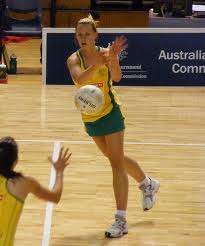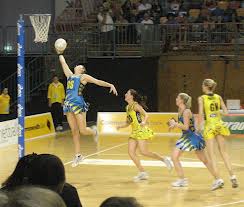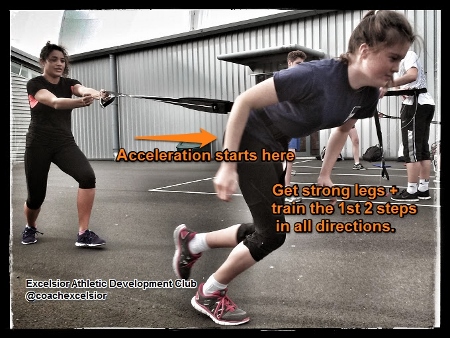From the ground up: how to get fit for netball part2
How do I get fit for Netball?
 In part 1 of this article we looked at the demands of the game and the different positions. Today we will look at how to train for Netball.
In part 1 of this article we looked at the demands of the game and the different positions. Today we will look at how to train for Netball.
Netball is primarily a female sport, which due to their anatomical construction are prone to knee injuries in sport before adding in the complications of landing, jumping and multi directional movement.
Netball is a game of high impact and stress, resulting in injuries occurring in:
- Lower limb (ankle, knee)
- Lower back/ Pelvis
- Shoulder
Typical types of injury are ligament strains and sprains, these can occur during training or competition especially if you are de-conditioned (Physio’s perspective here)
Improve the quality of movement first
If you move badly, you are slower and more likely to get injured. By improving how you move first, you can then look to improve how much you ove afterwards.
You can improve movements with 5 minutes practice a day, done for 5 days a week, 50 weeks of the year this equates to 20 hours annually.
For netball you need to improve lower body strength, postural strength both static and dynamic and shoulder strength.
It is best to start with simple exercises before progressing to more complex ones when you are competent at the basics.
The exercises can be done outside of a netball session, as part of the warm up, as a break for netball drills or in the cool down.
Simple progression of 5 exercises:
|
Basic Exercise |
Progression |
|
Squat |
Squat with overhead press |
|
Lateral lunge |
Clock lunges |
|
Walk Out |
Walk out press up |
|
Superman |
Single limb lift in press up position |
|
Single leg squat |
Step to single leg squat |
Many players returning to netball will work all day, this can have an adverse affect on their ability to do basic movements. For example, if you are sat down all day your hamstrings become shortened and pelvis may tilt, this could lead to poor mechanics when squatting which in turn will lead to bad landing technique and injuries.
To help correct this you can look at your posture at work/ home, train and stretch regularly and warm up and cool down sufficiently at training and matches.
Improving agility
 Every position requires agility, whether it is moving around the court or evading the opposition in the circle. When looking to improve agility we first need to look at strength, if we don’t have the movement efficiency we cant improve agility.
Every position requires agility, whether it is moving around the court or evading the opposition in the circle. When looking to improve agility we first need to look at strength, if we don’t have the movement efficiency we cant improve agility.
Once able to perform basic movements we can look at more dynamic movements, for example, progressing a squat to a double leg jump forwards, then to zig zag jumps forwards and then to single leg jumps. Technique is priority to start:
- keeping knees in line with toes
- looking ahead
- pointing toes forwards
This is the first step of our 4 step progression to improving agility.

Improving work capacity
The rules of netball state players need to be able to play at least 15 minutes before substitution, they also need to change speed and direction.
Due to limited time with athletes, we need to be smart to improve work capacity, this involves working with netball coaches. Small sided games can be incorporated in to training to target different intensities, with all small sided games we need to give sufficient rest.
|
Type of game |
% max heart rate |
Single game duration |
Work: rest ratio |
|
Medium intensity |
85% |
5-10 minutes |
1: 0.5-1 |
|
High Intensity |
85-95% |
5 minutes |
1: 1-1.5 |
|
Maximal intensity |
95+% |
Up to 2 minutes |
1: 1.5-3 |
Jogging should be avoided: it just makes you tired and rehearses incorrect running techniques. Instead think 4 Rs
- Run Well
- Run Fast
- Rest
- Repeat
Summary
With the intermittent high impact nature of netball players need to be proficient in movement. Correct jumping coaching can address part of this issue during Netball specific warm ups. This will help to reduce injuries and improve the players’ enjoyment of the sport.
Complete training plans can be found in our ebooks Jump Higher and Get Stronger
James Marshall, Duncan Buckmaster

[…] article will look at the fitness requirements of netball, its various positions and then part 2 will look at how to get fit to play […]
[…] ground up, how to get fit for Netball. Why returning to Netball needs to include fitness training. Netball fitness pt 2. Practical fitness training ideas for Netball […]